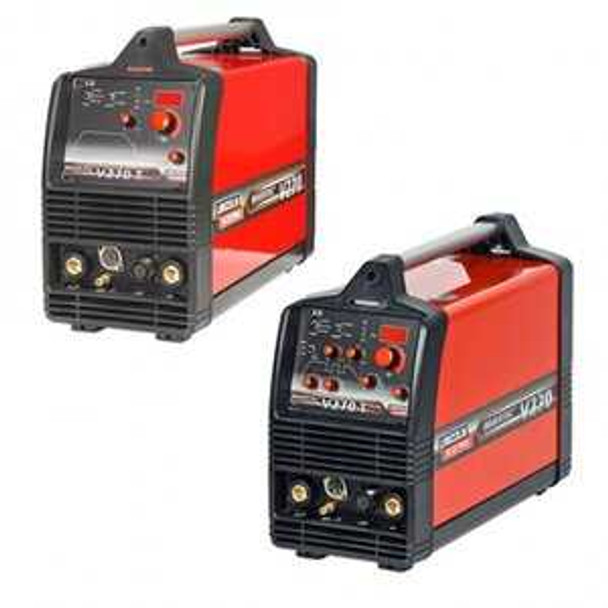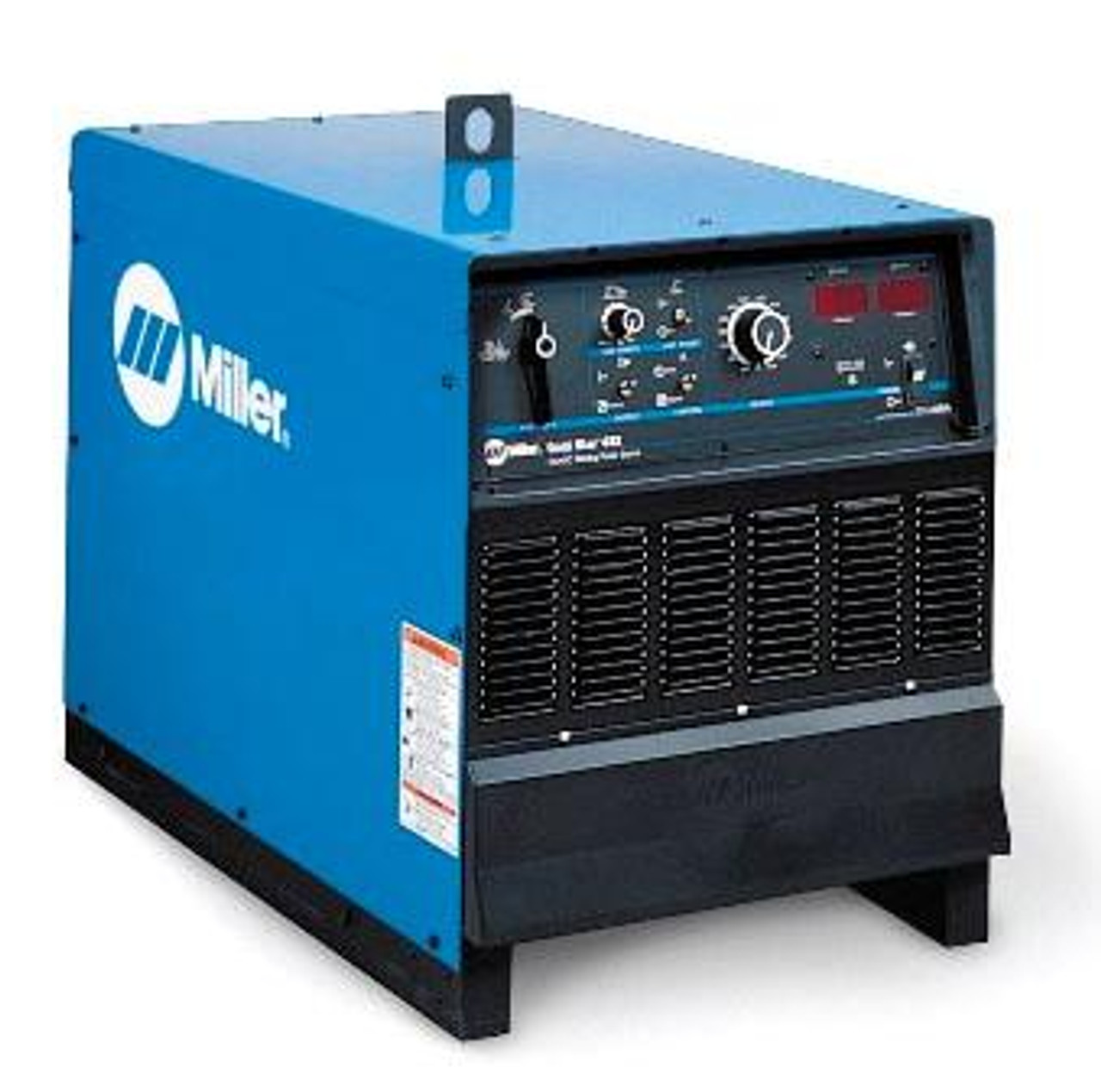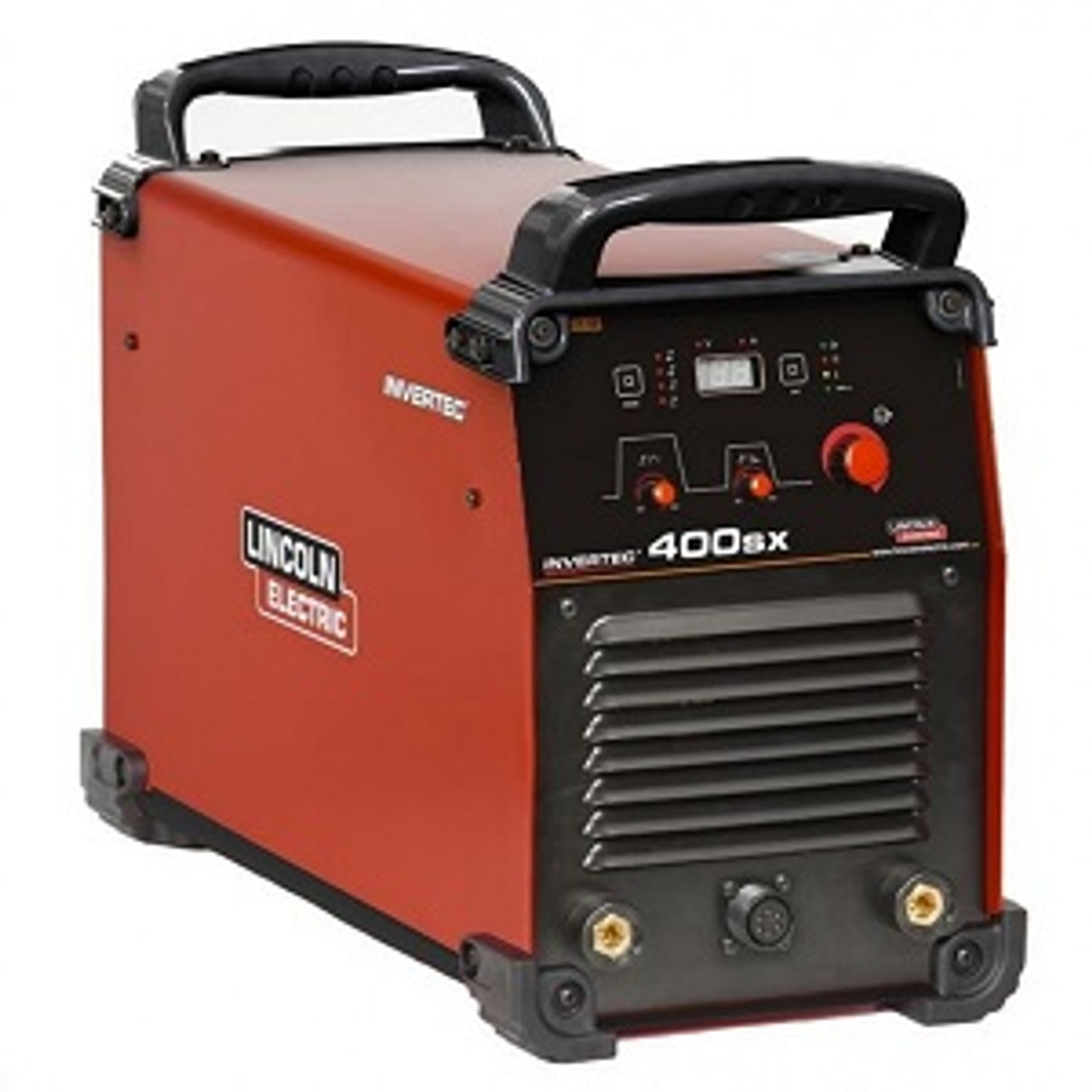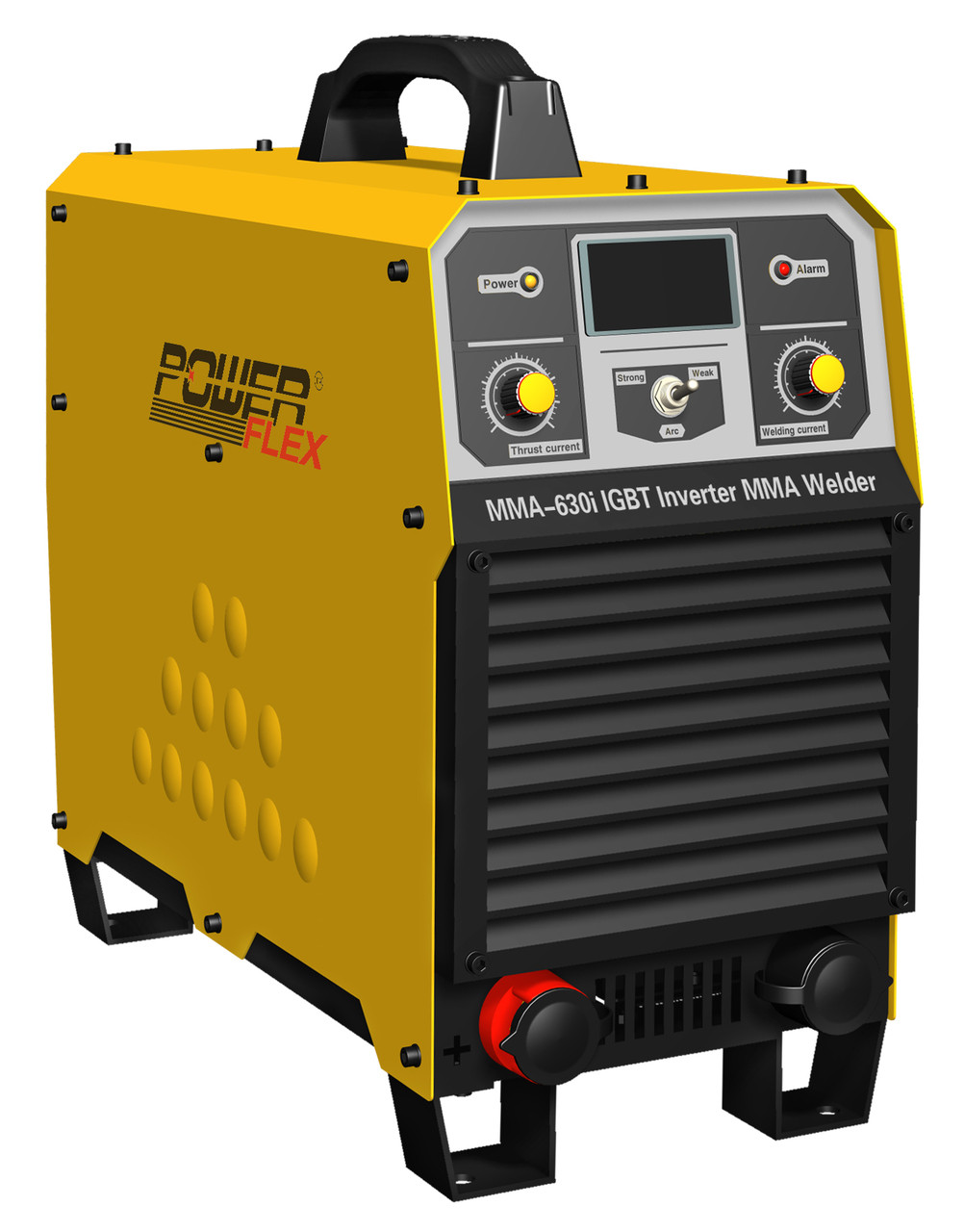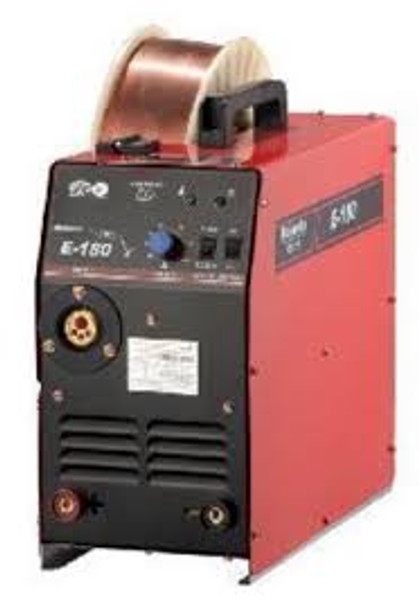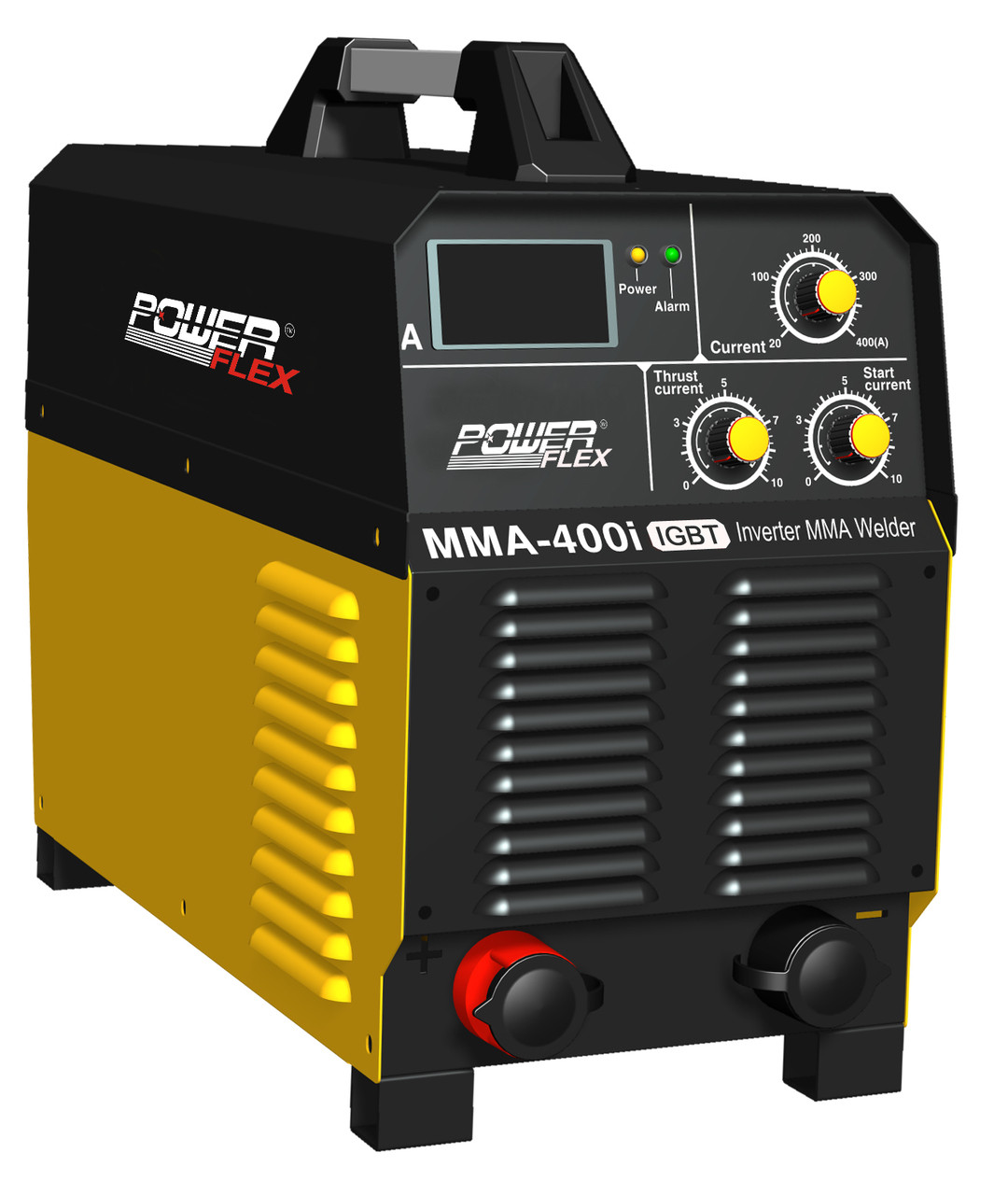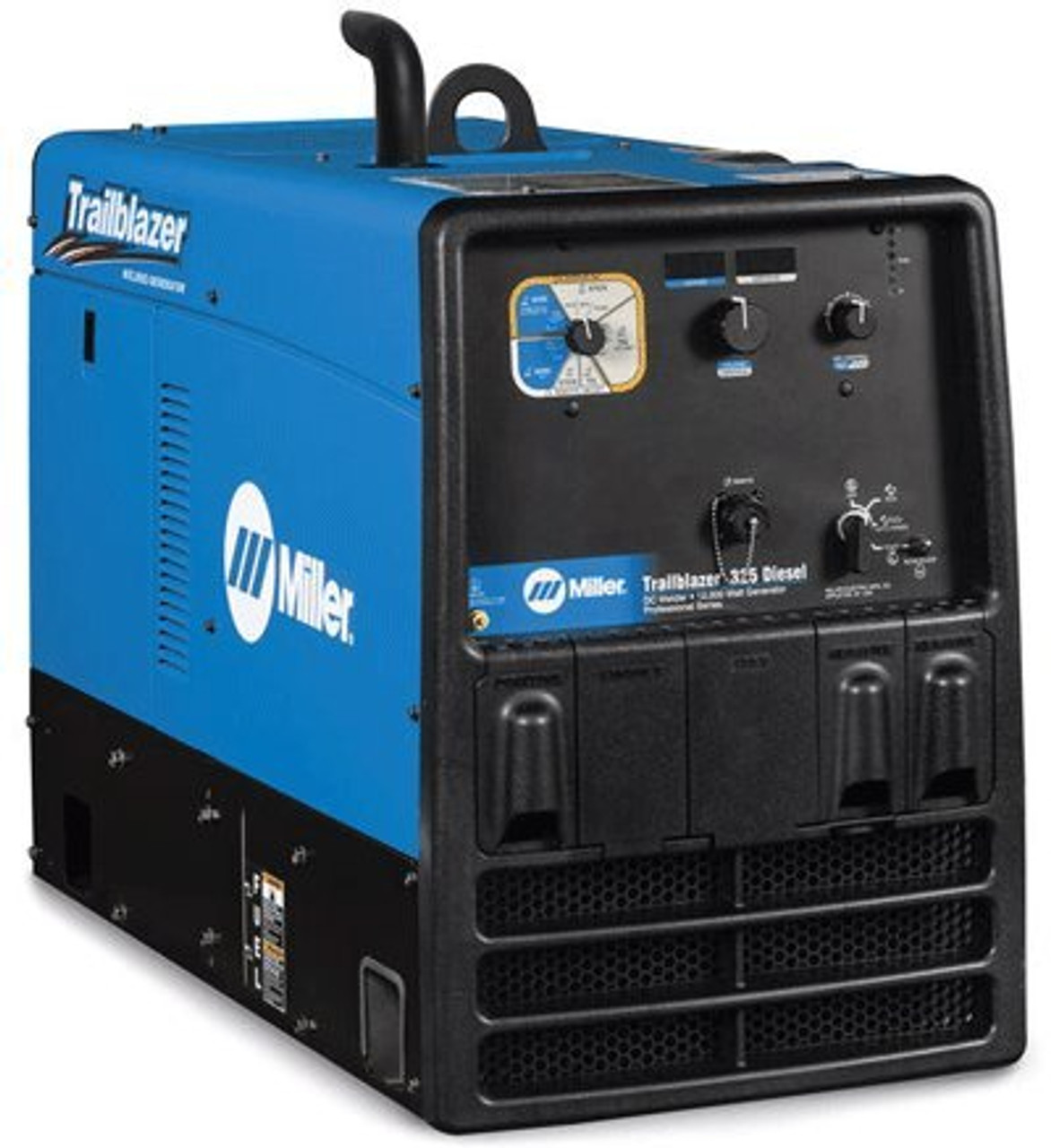A comprehensive guide to Shielded Metal Arc Welding Machines
Key Takeaway
Unlock the Potential of SMAW Machines: SMAW, or Shielded Metal Arc Welding, stands as a foundational welding process known for its adaptability and durability. Understanding its principles, from electrode selection to safety measures, empowers welders in diverse industries. With SMAW, you gain the ability to create strong, reliable joints in steel structures, heavy machinery, pipelines, and even artistic projects. Mastering SMAW opens a gateway to a world of versatile welding opportunities.
Introduction
Shielded Metal Arc Welding (SMAW), often referred to as "Stick" welding, stands as one of the oldest and most widely used welding processes in the world. Its importance in welding is paramount, especially in scenarios where versatility, durability, and cost-effectiveness are crucial factors. SMAW machines utilize a consumable electrode coated in a flux material. When an electric arc is struck between the electrode and the workpiece, it generates the heat required to melt both the electrode and the work material. Simultaneously, the flux coating releases a shielding gas and forms a slag, protecting the weld pool from atmospheric contamination. This process allows SMAW to be remarkably adaptable, making it suitable for welding various metals and alloys under different conditions. SMAW's significance extends across multiple industries. In construction, it is the go-to method for erecting steel structures, joining beams, and fabricating essential infrastructure components. In maintenance and repair work, SMAW is invaluable for fixing heavy machinery, pipelines, and equipment. Additionally, SMAW finds applications in shipbuilding, pipeline construction, and even artistic endeavors, demonstrating its versatility and relevance in diverse fields. This guide is designed to provide a comprehensive understanding of Shielded Metal Arc Welding (SMAW) machines, from their fundamental principles to practical applications and advanced techniques. By the end of this guide, you will have a profound understanding of SMAW machines, empowering you to tackle a wide array of welding projects with skill, precision, and confidence. Whether you're a seasoned welder or a novice eager to master the art of welding, this guide is tailored to elevate your SMAW expertise.
Inverter welding For TIG and SMAW 270TP Lincoln
Understanding SMAW Technology
Shielded Metal Arc Welding (SMAW), also known as "stick welding," uses an electric current to create an arc between a consumable electrode and the workpiece. In SMAW, the electrode, coated with a flux, generates the arc. This high heat melts both the electrode and base metal, bonding them into a strong weld joint.
In simpler terms, SMAW involves four main steps:
- Choose a suitable electrode compatible with the base metal and desired welding properties. The electrode should have a flux coating for shielding and slag formation.
- Connect the electrode holder and work clamp to the power supply, which can be alternating current (AC) or direct current (DC). The power source maintains a stable arc with constant amperage.
- Form the arc by touching the electrode tip to the workpiece before immediately withdrawing it. This action generates the arc, heating the electrode and workpiece.
- Glide the electrode along the joint, keeping arc length and travel speed consistent. Molten metal from the electrode and workpiece flows into the weld pool, solidifying to create a weld bead. The flux coating burns, releasing shielding gas and slag to cover the weld pool, preventing oxidation.
Components of an SMAW Machine
An SMAW machine consists of four main components:
1. Power Source: An electric welding machine supplies the required constant electrical current (AC or DC) for welding. The power source's size and capacity may vary, with DC offering more control and versatility compared to AC.
2. Electrode Holder and Cables: The electrode holder (stinger) grips the electrode, allowing the welder to control it while shielding against the arc's heat and current. It connects to the power source via welding cables, available in various sizes and current capacities.
3. Ground Clamp: The ground clamp attaches to the workpiece or a nearby metal surface, completing the electrical circuit and preventing electrical shock. It should efficiently conduct current without overheating.
4. Welding Electrode: This is a consumable metal rod that acts as both filler metal and arc initiator. It has a core wire for current flow and a flux coating for shielding and slag formation. The electrode is selected based on the base metal and specific welding requirements.
How SMAW Creates an Electric Arc
In a nutshell, an electric arc forms when an electric current flows through a gap between conductors, ionizing the air molecules and generating intense heat and light. In SMAW, an arc occurs between the electrode tip and the workpiece surface. The welder initiates the arc by striking the coated electrode against the workpiece, creating a short circuit.
This arc produces high temperatures, melting the electrode tip and base metal, forming a liquid metal pool that solidifies as the welder advances the electrode. Maintaining the arc involves feeding molten metal from the electrode. Arc length affects arc voltage, with longer arcs having lower heat input and penetration, while shorter arcs result in more heat input and penetration.
Key principles of SMAW welding
SMAW welding requires skill and practice to achieve good results. Some of the key principles you need to follow to ensure high quality SMAW welds are:
- Choose the right electrode for the base metal, joint design, position, and desired weld quality.
- Set up the power source with correct polarity, voltage, and amperage.
- Strike the arc smoothly, avoiding sticking or splattering.
- Maintain consistent arc length and travel speed.
- Control the electrode's angle and direction.
- Clean and inspect the weld after removing slag.
Understanding these fundamental SMAW principles is essential for proficiency in this versatile and widely used welding process.
Miller DC Rectifier GoldStar 602 Electric Welding Machine
SMAW Applications and Industries
Shielded Metal Arc Welding (SMAW) is a versatile and widely used welding technology with a range of uses across various sectors. It excels in fieldwork, repair and maintenance, as well as heavy-duty fabrication. Notably, SMAW is a key player in industries demanding high-strength, durable welds, including:
Construction & Fabrication: SMAW plays a vital role in the construction and fabrication sector due to its versatility and cost-effectiveness. It's extensively employed for connecting structural steel components like beams, columns, and trusses in buildings, bridges, and towers. Additionally, it simplifies the welding of reinforcing bars (rebar) and other elements used in concrete structures. SMAW's ability to work with welding cables spanning over 100 feet proves particularly valuable, reducing the need for transporting bulky welding equipment on construction sites and saving precious time.
Shipbuilding: SMAW holds a significant role in shipbuilding, contributing to the welding of critical components such as hulls, bulkheads, and frames, ensuring robust and durable welds. It is also used to attach hull plates, frames, and various ship parts, including pipes, valves, and fittings for maritime systems. SMAW's adaptability shines in scenarios where transporting welding equipment to specific spots aboard a ship would be impractical or risky.
Pipeline Welding: SMAW is crucial in pipeline welding, particularly in the oil and gas industry, where it excels in producing high-quality welds under harsh outdoor conditions. It is widely used for welding pipes, tubes, fittings, joints, and supports for the transportation of various fluids, including oil, gas, and water. What sets SMAW apart in pipeline welding is its ability to perform in areas and situations where other welding processes like MIG, TIG, and flux core welding may pose operational challenges. Due to its minimal equipment requirements, SMAW is easily transportable to work sites, which proves especially beneficial in remote or challenging locations. Furthermore, many SMAW welding machines are equipped with generators, providing essential power sources for grinders and other crucial power tools when working on pipelines in remote areas.
Maintenance & Repair: SMAW's adaptability makes it highly valuable in maintenance and repair operations across various industries, including automotive and agriculture. It is well-suited for repairing a wide array of machinery, equipment, and structural components. Its versatility shines in industrial repair and maintenance applications, especially in confined spaces and when working with contaminated materials. Its robustness is particularly significant, as it performs effectively in adverse conditions like windy environments, rain, and even underwater, all while maintaining weld quality. Moreover, SMAW's unique ability to weld unclean or rusty metals solidifies its position as a top choice for maintenance and repair tasks.
Advantages and Limitations of SMAW Machines
SMAW machines offer several advantages over other welding processes:
Portability: SMAW machines are compact and lightweight, easily transportable by vehicle or even by hand. They do not require additional equipment or an external gas source, making them ideal for on-site welding tasks.
Flexibility: SMAW machines can weld various metals of varying thicknesses and forms, adapting to various welding settings and environments. Long cable lines simplify SMAW welding at greater distances from the power supply compared to other methods.
Versatility: They can weld steel, stainless steel, cast iron, and some non-ferrous metals without demanding the same level of base material cleanliness as other methods like TIG, making it ideal for field repairs.
Cost-Effectiveness: SMAW equipment tends to be more affordable than other welding processes like MIG, TIG, or flux core welding.
However, SMAW machines also have some limitations:
Slag & Spatter Removal: SMAW machines require slag and spatter removal, which can slow down the welding process. Slag must be chipped or brushed away before continuing, and spatter may necessitate post-weld cleaning.
Skill Requirement: Operating SMAW machines demands a considerable level of skill and experience, involving precise control of parameters such as arc length, travel speed, electrode angle, and direction. Additionally, selecting the right electrode type and size is crucial for consistently achieving high-quality welds.
Electrode Replacement: Metal electrodes must be replaced when they become too short, leading to numerous starts and stops in the weld bead. Stops and starts contribute to most weld defects.
Inverter welding machine for SMAW (stick welding) 400SX Lincoln
Types of SMAW Machines
SMAW machines come in various sizes, power levels, and features to cater to different welding needs. There are a number of models and brands available, each with its unique advantages. Here are some notable examples:
Inverter Welding Machine for SMAW (Stick Welding) 400SX Lincoln: This modern inverter SMAW machine uses high-frequency switching to convert AC input into DC output. It can weld mild steel up to 1/4 inch thick with a single pass, offering an output range of 5-150 amps and a 35% duty cycle at 150 amps.
Miller DC Rectifier GoldStar 602 Electric Welding Machine: The Miller DC Rectifier GoldStar 602 is a DC transformer SMAW machine that excels at welding mild steel up to 3/16 inch thick with a single pass, offering an output range of 40-225 amps and a 20% duty cycle at 225 amps.
PowerFlex Welding Machine MMA-630i (3-Phase Electric-Powered): This heavy-duty DC rectifier SMAW machine can handle continuous work with various welding electrodes. It effectively welds both stainless steel and mild steel, minimising spatter. It offers a wide output range of 60-500 amps and a 60% duty cycle at 500 amps.
Esab Warrior 500i Multipurpose Inverter Arc Welding Machine: The Esab 500i stands out as a versatile inverter SMAW machine that also boasts MIG, TIG, and gouging capabilities. It can weld mild steel up to 3/8 inch thick with a single pass and offers dual voltage input (120V or 240V) and dual frequency output (50Hz or 60Hz). The machine's variable arc force control allows users to adjust arc characteristics. Depending on the model, it delivers a maximum output of either 140 amps at 120V or 200 amps at 240V, with a 35% duty cycle at the respective amperage.
Comparison of portable and industrial SMAW machines
Portability: Portable SMAW machines are designed for convenient movement across different job sites and typically operate on standard household voltage. In contrast, industrial machines are bulkier and require more power, making them less portable but better suited for fixed installations.
Power Output: Industrial SMAW machines offer higher amperages and greater welding capability compared to portable equipment. This makes them well-suited for welding heavier materials and heavy-duty applications.
Duty Cycle: Industrial machines come with a higher duty cycle, enabling them to operate continuously at high amperages without overheating. Portable machines have a reduced duty cycle and need frequent cooling breaks during prolonged use.
Cost: Portable SMAW machines are generally more budget-friendly and user-friendly, making them suitable for beginners and small-scale projects. Industrial machines are more expensive and typically found in professional welding shops and major industrial operations.
Features to Consider When Choosing an SMAW Machine
When selecting an SMAW machine, it's crucial to consider the following features:
Power Input: Ensure the machine aligns with your available power source, whether it's single-phase or three-phase, AC or DC, 120V or 240V. Additionally, check the power rating and power factor to prevent overloading the power source or excessive power loss.
Power Output: Match the machine's power output to your welding application, whether it's light-duty or heavy-duty, for thin or thick metals, and for AC or DC polarity. Examine the output range and duty cycle to ensure it provides sufficient current and voltage for the desired weld quality and duration.
Voltage Control: Voltage control allows easy arc voltage adjustment based on electrode type, size, and position. Choose between fixed voltage control (preset and unchangeable), variable voltage control (adjustable within a set range), or stepless voltage control (continuous voltage adjustment without steps using a potentiometer).
Electrode Compatibility: Confirm that the machine is compatible with the welding electrodes you intend to use. Electrode compatibility is essential since electrodes vary in terms of current type, polarity, voltage, and current requirements. Select an SMAW machine that matches the electrodes suitable for your welding application, adhering to the manufacturer's recommendations or AWS specifications for optimal settings.
PowerFlex welding machine MMA-630i 3 phase electric-powered
Setting Up and Operating an SMAW Machine
To use an SMAW machine, the user needs to follow some steps to set up the equipment, adjust the settings, and perform the welding.
Here's a general step-by-step guide for setting up an SMAW machine, but always refer to the manufacturer's manual for specific instructions and safety guidelines:
- Safety First: Prioritise safety by wearing essential personal protective equipment (PPE), including a welding helmet with the appropriate shade, gloves, long-sleeved clothing, and safety glasses.
- Electrode Selection: Choose the right electrode based on factors like the base metal, joint design, welding position, and desired weld quality. Ensure it matches the machine's current type, polarity, voltage, current range, coating type, diameter, and length.
- Connect Electrode Holder and Work Clamp: Attach the electrode holder to the positive terminal for reverse polarity (DCEP) or the negative terminal for straight polarity (DCEN), while the work clamp connects to the opposite terminal. For AC power sources, either terminal can be used for either connection.
- Power Cord Connection: Plug the power cord into a suitable power outlet that matches the machine's voltage and amperage requirements. Ensure proper grounding and protection. Turn on the machine's power switch and verify that all indicator lights or gauges indicate normal operation.
- Electrode Preparation: Fix the chosen electrode securely into the electrode holder, adjusting its angle and orientation. The electrode holder should provide a firm grip, with the electrode angle between 15° and 30° from the vertical axis of the joint.
- Work Clamp Placement: Secure the work clamp to the workpiece or a nearby metal surface with a solid electrical connection to the workpiece, to prevent arcing between the clamp and other objects.
- Commence Welding: With all setup steps completed, you can start welding.
Adjusting Amperage and Voltage Settings
Amperage and voltage settings are critical for controlling the SMAW arc's characteristics. Adjust these settings based on factors like electrode type, size, position, welding conditions, and personal preferences:
- Higher amperage settings suit thicker materials and larger electrodes.
- Lower amperage settings are ideal for thinner materials and smaller electrodes.
Voltage settings control arc length, with shorter arcs (lower voltage) offering better control, suitable for tight spaces, and longer arcs (higher voltage) for deep penetration on thicker materials.
Tips for Striking an Arc and Maintaining a Stable Weld Pool
Striking an arc and managing the weld pool effectively are key to successful SMAW welding:
- To strike an arc, hold the electrode slightly above the workpiece, tap it against the metal, and quickly withdraw it while maintaining a stable distance.
- Maintain a uniform arc length, typically equal to the electrode's diameter.
- Hold the electrode at the correct angle (usually around 10-20 degrees from perpendicular).
- Keep a steady electrode movement along the joint, ensuring a consistent travel speed.
Techniques for Achieving Quality SMAW Welds
Achieving high-quality SMAW welds involves mastering various techniques:
- Maintain bead control by keeping a steady hand and travel speed.
- Practise proper electrode manipulation, moving it in a straight line or using a weaving technique for wider welds.
- Consistently maintain the welding angle and arc length.
- Pause at the end of each pass to ensure proper crater fill and prevent cracking.
- Use appropriate techniques for restarts and stops to avoid defects.
Remember that SMAW welding proficiency requires practice and skill development. Continuous practice and refining your technique will lead to improved results over time.
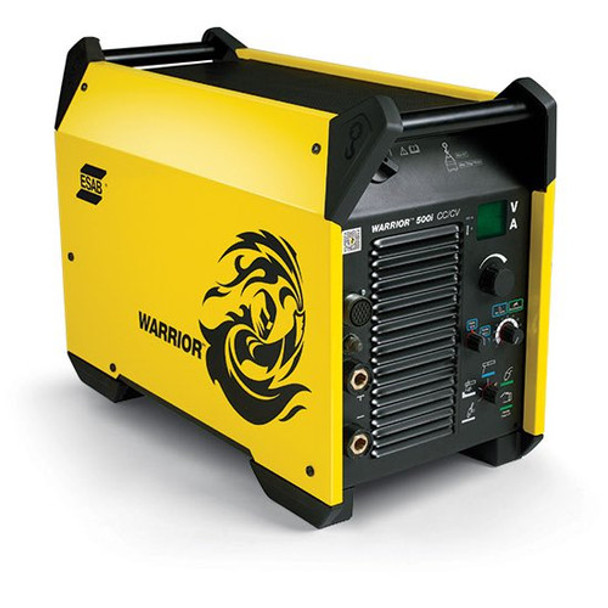
Esab warrior 500i Multipurpose Inverter arc welding machine
Electrode Selection and Welding Parameters
Selecting the appropriate welding electrode is vital for achieving high-quality SMAW welds. Consider factors such as:
Metal Type: Choose an electrode that matches the type of metal you are welding. For instance, E6010 is suitable for mild steel.
Welding Position: Ensure the electrode is compatible with the welding position you intend to use. Different electrodes are designed for various positions, including all positions, flat and horizontal, or only flat.
Joint Configuration: The joint's design, such as gap width, root opening, and groove angle, can impact electrode selection. Some electrodes are better suited for specific joint configurations.
Welding Amperage: Consider the amperage you plan to use for the welding job, as it influences electrode choice.
Common SMAW electrodes include:
E6010: Ideal for DC+ polarity, deep penetration and fast freezing slag. It is suitable for all positions, including vertical down and pipe welding.
E6011: Suitable for AC or DC+ polarity, similar characteristics to E6010 but can operate on AC power sources.
E6013: Suitable for AC, DC+, or DC- polarity, offers medium penetration, smooth arc. Suitable for all positions, especially for sheet metal and thin sections.
E7018: Suitable for AC or DC+ polarity, shallow penetration, smooth arc. Produces strong and tough welds, suitable for various applications.
Understanding electrode classification and coating types
SMAW electrodes follow a standardised classification system by the American Welding Society (AWS). These codes provide information on the electrode type, size, and characteristics.Their names begin with E followed by either a four-digit number or a five-digit number, such as E6010, E6013, E10018, and so on.
- E: Stands for electrode.
- First Numbers: Indicate the minimum tensile strength in ksi (thousands of pounds per square inch). For example, 60 indicates 60 ksi in E6010 and 100 means 100 ksi in E10018.
- Next Number: Signifies the welding position, specifying where the electrode can be used. 1 stands for all positions; 2-flat and horizontal positions; 3 - flat positions; and 4- flat, horizontal, vertical down, and overhead positions.
- Final Number: Indicates the type of coating and the electrode's compatibility with different current or polarity types. For example, 0 indicates cellulose sodium coating for DC+ polarity only; 1 indicates cellulose potassium coating for AC or DC+ polarity; 3 indicates rutile potassium coating for AC or DC+ or DC- polarity; and 8 indicates low hydrogen potassium coating for AC or DC+ polarity.
Determining Appropriate Current and Polarity Settings
Current and polarity settings significantly impact the welding process:
- Current Setting: Regulates the amount of current flowing through the arc. Higher current yields a hotter arc with deeper penetration and faster deposition, while lower current results in a cooler arc with shallow penetration and slower deposition.
- Polarity Setting: Controls the direction of current flow between the electrode and workpiece. Options include DC+ (high heat input and deep penetration), DC- (low heat input and shallow penetration), and AC (balanced heat input and medium penetration).
Select current and polarity settings based on electrode requirements, with DC+ for high arc force, DC- for a smooth arc, and AC for versatility.
Fine-Tuning Parameters for Different Materials and Joint Configurations
To achieve high-quality SMAW welds, consider various factors beyond current and polarity settings:
Material Type: Different materials have distinct properties, influencing parameters like current, voltage, and travel speed. Stainless steel, for example, requires a lower current, higher voltage, and faster travel speed than carbon steel to achieve a similar weld quality
Material Thickness: Thicker materials require higher current, voltage, and travel speed compared to thinner materials, to achieve similar results.
Joint Design: Factors like gap width, root opening, and groove angle impact welding parameters. Wider gaps and smaller root openings require different settings than narrower gaps and larger root openings.
Welding Position: Consider the welding position (vertical, horizontal, overhead, or flat) to adjust parameters and prevent issues like sagging due to gravity. Vertical and overhead positions may require higher travel speeds and lower currents.
Taking these factors into account ensures that your SMAW welding process is tailored to the specific materials and joint configurations you're working with, resulting in quality welds.
Kaierda Mig Mag Inverter Co2 Welder Model E-180
Welding Safety with SMAW
Safety measures are crucial in SMAW welding to protect the well-being of welders and those around them. The significance of these measures includes:
Personal Safety: Minimising exposure to hazards like electric shock, burns, and fumes to ensure the welder's physical well-being.
Environmental Safety: Preventing fires, explosions, or environmental damage that can result from improper welding practices.
Quality Assurance: Proper safety measures contribute to higher-quality welds, reducing the risk of defects that could compromise structural integrity.
Personal Protective Equipment (PPE) for SMAW Welders
Personal protective equipment is vital for safeguarding welders from various hazards. SMAW welders should wear the following PPE:
- Welding Helmet: Protects the eyes and face from intense welding light and sparks. Auto-darkening helmets are popular for their convenience.
- Welding Gloves: Heat-resistant gloves shield the hands from burns and sparks.
- Welding Jacket or Apron: Flame-resistant clothing provides additional protection against sparks and hot metal.
- Safety Glasses: Protect the eyes from flying debris; should be worn under the welding helmet.
- Respiratory Protection: Necessary in environments with poor ventilation or when working with materials that produce harmful fumes.
- Hearing Protection: Mitigates hearing damage caused by prolonged exposure to welding noise.
- Steel-Toed Boots: Protects feet from falling objects and heavy equipment.
Safe Work Practices and Precautions
Adhering to safe work practices and precautions minimises the risk of accidents during SMAW welding:
Ventilation: Work in well-ventilated areas or use exhaust systems to remove welding fumes. For confined spaces, consider air monitoring and proper ventilation.
Fire Safety: Keep a fire extinguisher nearby and maintain a clean work area to prevent the buildup of flammable materials.
Equipment Inspection: Regularly inspect cables, connections, and the welding machine for damage or wear. Ensure they are in good condition.
Preparation: Properly prepare the workpiece and joint before welding. They should be clean, dry, and free of contaminants that can affect weld quality.
Welding Procedures: Follow proper welding procedures and techniques. Securely clamp or fixture workpieces to prevent movement.
Avoid Direct Contact: Prevent skin-to-metal contact while welding, as the metal can become extremely hot. Use appropriate tools and gloves for handling hot workpieces.
Post-Weld Inspection: Clean and inspect the weld after welding, removing slag by chipping or brushing before the next pass or inspection.
Handling and Storage of Welding Electrodes
Proper handling and storage of welding electrodes are essential to prevent damage, deterioration, or contamination:
Handling: Handle electrodes carefully to avoid breakage or bending. Hold them by the end not coated with flux, and do not drop or throw them.
Storage: Store electrodes in a dry, cool place to prevent moisture absorption or oxidation. Keep them in their original packaging or in a sealed container with a desiccant or heater to maintain low humidity. Avoid direct sunlight or high temperatures.
Reconditioning: Electrodes exposed to moisture can be reconditioned by baking them in an oven at a specified temperature and time per the manufacturer's instructions. Cool them gradually before use.
By adhering to these safety measures and precautions, SMAW welders can significantly reduce the risk of accidents and create a safer working environment.
PowerFlex welding machine MMA-400i 3 phase electric-powered
Troubleshooting Common SMAW Welding Issues
Welding defects are common issues that can affect the quality of SMAW welds. Recognizing and addressing these defects is essential. Common welding defects in SMAW include:
Porosity: Small gas pockets or bubbles in the weld bead. Caused by moisture, contamination, incorrect current or polarity settings, or improper travel speed.
Spatter: Formation of tiny metal droplets outside the weld area. Often due to high voltage settings, damaged electrodes, or excessive arc length.
Incomplete Fusion: Occurs when the weld bead doesn't fully penetrate or fuse with the base metal. Typically caused by improper welding technique or inadequate heat.
Cracks: Fractures in the weld or base metal, resulting from stress, improper cooling, high hydrogen levels, or defective materials.
Solutions for Issues like Porosity, Spatter, and Incomplete Fusion
To prevent or minimise these common issues:
Porosity: Store electrodes properly to prevent moisture absorption. Keep workpieces clean, adjust welding technique to minimise gaps and ensure complete fusion.
Spatter: Optimise welding parameters, like amperage and arc length. Maintain proper electrode angle and consistent travel speed. Anti-spatter spray or gel can also help.
Incomplete Fusion: Adjust amperage settings for sufficient heat penetration. Ensure the correct electrode angle and travel speed. Thoroughly clean the joint to remove contaminants.
Cracks: Preheat the base metal for materials prone to cracking. Follow proper cooling procedures, and choose low-hydrogen content electrodes.
Diagnosing and rectifying machine-related problems
To diagnose and rectify machine-related problems in SMAW welding, the user should follow these general steps:
- Check the power source, the power cord, the power outlet, and the grounding system to ensure that they are in good condition and compatible with the machine and the electrode type and size.
- Check the machine settings, such as polarity, voltage, amperage, and arc force, to ensure that they are correct and suitable for the electrode type, size, and position.
- Check the electrode holder, the work clamp, and their connections to ensure that they are in good condition and have a good electrical contact.
- Check the indicator lights or gauges on the machine to ensure that they are working properly and do not show any errors or warnings.
- Consult the manufacturer’s manual for specific instructions and safety precautions for operating and troubleshooting the machine.
- Finally, contact the manufacturer or a qualified technician for assistance if the problem persists. Regular maintenance and proper machine setup can prevent many machine-related issues. Troubleshooting these problems promptly can help ensure smooth welding operations and high-quality welds.
Diagnosing and Rectifying Machine-Related Problems
For machine-related issues:
Check Power Source: Ensure the power source, cord, outlet, and grounding system are compatible with the machine, electrode type, and size.
Verify Settings: Confirm that machine settings, including polarity, voltage, amperage, and arc force, are correct for the electrode and position.
Inspect Connections: Check the electrode holder, work clamp, and their connections for damage and proper electrical contact.
Monitor Indicators: Ensure indicator lights or gauges on the machine are functional and free of errors or warnings.
Consult the Manual: Refer to the manufacturer's manual for specific operating and troubleshooting instructions.
If the issue persists, contact the manufacturer or a qualified technician for assistance. Regular maintenance and proper machine setup can help prevent machine-related problems, ensuring smooth welding operations and high-quality welds.
Miller Welding Machine Trailblazer 325 Diesel driven
Maintenance and Care of SMAW Machines
To maintain optimal performance and longevity of SMAW machines, follow regular inspection and cleaning steps before and after each use, and periodically as recommended in the manufacturer's manual. Some of these procedures include:
Bi-annual Cleaning: Every six months, disconnect all power sources and clean the interior by blowing out or vacuuming. Check for dirt, dust, grime, or moisture on components such as cooling fans, wiring, transformers, and PC boards. Use a soft cloth or brush to clean as needed.
Quarterly Electrode Holder and Work Clamp Check: Every three to four months, inspect and clean the electrode holder and work clamp with a wire brush. Replace them if you find any issues like cracks, breaks, loose connections, or corrosion.
Annual Power Component Inspection: Annually, inspect and, if necessary, replace the power cord, power plug, and power outlet. Look for signs of damage such as cuts, frays, burns, or loose connections on these components and replace them as required.
Annual Fuse and Circuit Breaker Examination: On an annual basis, check and replace fuses or circuit breakers if needed. Look for blown fuses or tripped circuit breakers on the machine or power source, and replace them with new ones as necessary.
Lubrication and Preventive Maintenance
To prolong the life and enhance the efficiency of SMAW machines, follow the manufacturer's manual for proper maintenance. Key maintenance tasks include:
Lubrication: Once a year, lubricate the machine's moving parts, such as the fan motor, drive rolls, and wire feeder, using manufacturer-recommended lubricants. Apply a small amount of lubricant and wipe off any excess with a cloth.
Calibration: Annually, calibrate the voltage and amperage settings using calibrated voltmeters and ammeters to measure the machine's output voltage and current. Adjust these settings according to the manufacturer's specifications.
Insulation Resistance Test: Conduct an insulation resistance test at least once a year using an insulation tester. Measure the resistance between the electrode holder and the work clamp, as well as between the power cord and the machine case. Ensure the resistance is higher than the manufacturer's specified minimum value.
Storage and Transportation Considerations
To protect SMAW machines during storage and transportation, follow these guidelines:
Proper Storage: When not in use, store SMAW machines in a cool, dry area away from direct sunlight, high temperatures, humidity, rain, snow, or dust exposure. Use a protective cloth or plastic sheet if necessary.
Safe Transportation: During transportation, handle SMAW machines with care using appropriate tools or vehicles. Utilise handles, wheels, carts, or trucks to secure them safely. Use straps or ropes to prevent slipping or falling.
Security Measures: When leaving SMAW machines unattended, secure them in a safe location. Implement locks, chains, cables, or alarms to deter theft or unauthorised access.
Conclusion
In conclusion, Shielded Metal Arc Welding (SMAW) is a versatile and valuable welding method known for creating strong, high-quality welds in various applications. In this article, we've explored the details of SMAW, from its basics to choosing electrodes, setting welding parameters, solving common issues, and maintainance. Also, understanding electrode classification, coating types, and their compatibility with different materials and joint configurations is essential.
Key takeaways include the need for careful electrode selection, considering factors like material type, thickness, joint design, and welding position. We've also stressed the vital role of safety in SMAW, highlighting the importance of using personal protective equipment (PPE) and adhering to safe practices.
If you’re a young welder reading this, we encourage you to delve deeper into SMAW. Mastering this technique opens doors to creating strong and enduring welds. While it demands practice, patience, and ongoing learning, the rewards are worth it.
Learn more: An Overview of Different Types of Arc Welding Machines


